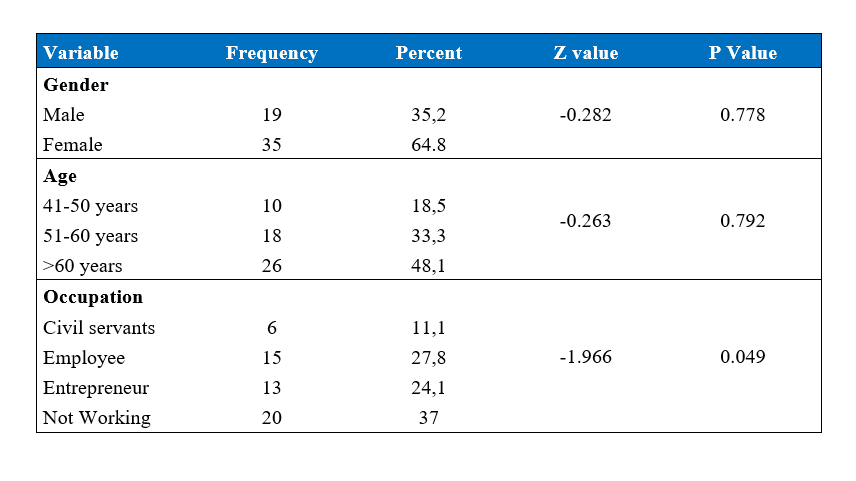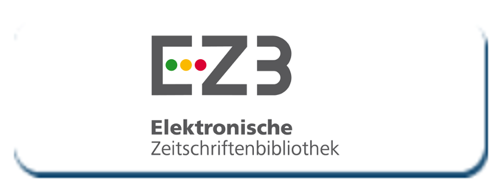Shock index (SI) of patients with physical restraint (hand fixation) in patients with intensive care
DOI:
https://doi.org/10.5281/zenodo.7425355Keywords:
Hand fixation, intensive care unit, physical restraint, shock indexAbstract
Objective: Critically ill patients may experience a state of shock. Patients with critical conditions may experience agitation and also the need for an immobilization measure. Fixation or Restraint actions are carried out so that nursing and medical actions can be carried out and the aim is to improve the condition immediately. The purpose of this study was to look at the Shock Index (SI) in patients with physical restraint (hand fixation) in intensive care.
Materials and methods: The research method uses an Observational Description design. The population is patients who receive physical fixation interventions or physical restraint in the inpatient room at the Kediri Baptist Hospital. The study was conducted from June to July 2022. The sample size was 54 patients, using a purposive sampling technique with inclusion criteria namely total care patients, patients receiving restrain and having a RASS value > +1, patient exclusion i.e. patients receiving treatment less than twice 24 o'clock. The research variable is the shock index.
Results: The results showed that most of the respondents were female (64.8%) and male (35.2%). While the majority of respondents are over 60 years old (48.1%). Most of the respondents did not experience shock (70.4%) while those who experienced shock (29.6%). The results showed that there was no significant difference in terms of the index of shock in the control group and the experimental group (p=0.074).
Conclusions: There was no difference in the shock index in the experimental group and the control group in patients who were given restraint, so further research is needed regarding the factors that affect shck conditions in critical patients.
References
Pomalango ZB. Shock Index (SI) dan Modified Shock Index (MSI) sebagai Prediktor Outcome pada Pasien Gawat Darurat: Systematic Review. Shock. 2020;2(2):197-207.
Marenco CW, Do WS, Lammers DT, Horton JD, Azarow K, Eckert MJ. Validation of Shock Index Pediatric-Adjusted for children injured in warzones. J Trauma Acute Care Surg. 2020;89(4):642–8.
Daş M, Bardakci O, Siddikoglu D, Akdur G, Yilmaz MC, Akdur O, et al. Prognostic performance of peripheral perfusion index and shock index combined with ESI to predict hospital outcome. Am J Emerg Med. 2020;38(10):2055–9.
Middleton DJ, Smith TO, Bedford R, Neilly M, Myint PK. Shock index predicts outcome in patients with suspected sepsis or community-acquired pneumonia: a systematic review. J Clin Med. 2019;8(8):1144.
Schroll R, Swift D, Tatum D, Couch S, Heaney JB, Llado-Farrulla M, et al. Accuracy of shock index versus ABC score to predict need for massive transfusion in trauma patients. Injury. 2018;49(1):15–9.
Fidyawati Dj Hasihun. Analysis Of Knowledge Levels With Compliance With Antibiotic Use. J Appl Nurs Heal. 2020;2(2):67–71.
Ullah T. Analysis Of Factors That Affect the Implementation Of Triage On Satisfaction Of Patients Family. J Appl Nurs Heal. 2022;4(1):140–5.
Suwardianto H, Sari DAKW. Pain Level in Critical Patients With Sleep Hygiene Care In Intensive Care Unit. J Nurs Pract. 2019;3(1):14-21.
Suwardianto H, Sari D. Environmental Factors of Sleep Hygiene That Influence The Level of Pain on Criticall ill Patients in Intensive Care Unit. Str J Ilm Kesehat. 2020;9(1):26-34.
Nielson S, Bray L, Carter B, Kiernan J. Physical restraint of children and adolescents in mental health inpatient services: A systematic review and narrative synthesis. J Child Heal Care. 2021;25(3):342–67.
Anasulfalah H, Faozi E, Mulyantini A. Manset Restraint sebagai Evidence Based Nursing untuk Mengurangi Resiko Luka Ekstremtas pada Pasien yang Mengalami Penurunan Kesadaran. In Prosiding Seminar Nasional Keperawatan Universitas Muhammadiyah Surakarta 2020;2020:40-5.
Burry L, Rose L, Ricou B. Physical restraint: time to let go. Intensive Care Med. 2018;44(8):1296–8.
Salmia. The Influence Of The Compliance Of Anti Hypertension Diet On Lowering Blood Pressure In Elderly. J Appl Nurs Heal. 2020;2(1):22–7.
Dongari D, Kumar KS, Maadhavi D. Effectiveness of Self-Instructional Module on Knowledge regarding Maternal Deprivation Syndrome among Mothers in Selected Community Areas. J Appl Nurs Heal;4(1):61–70.

Downloads
Published
How to Cite
Issue
Section
License
Copyright (c) 2022 Journal of Clinical Trials and Experimental Investigations

This work is licensed under a Creative Commons Attribution 4.0 International License.
![]() The journal is licensed under a Attribution4.0 International (CC BY 4.0).
The journal is licensed under a Attribution4.0 International (CC BY 4.0).










